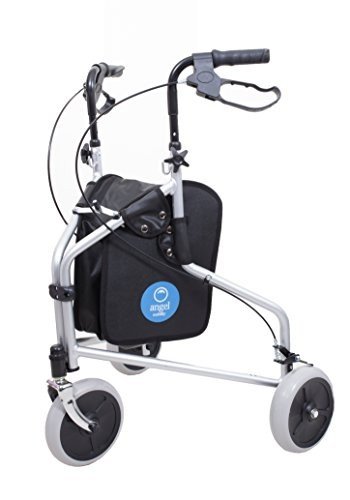Are You Responsible For A Mobility Scooter Budget? 10 Ways To Waste Your Money

A Comprehensive Guide to Buying a Mobility Scooter
Mobility scooters have ended up being a crucial tool for many people aiming to enhance their self-reliance and mobility. With a huge range of designs and features readily available, choosing the ideal mobility scooter can be intimidating. This article provides a helpful guide to assist customers navigate their options, assess their requirements, and make an informed purchase.
Comprehending Mobility Scooters
Mobility scooters are electric cars created for individuals who experience mobility obstacles. They are especially advantageous for seniors, those with specials needs, or people recuperating from injuries. Mobility scooters can differ commonly in terms of design, features, and prices.
Types of Mobility Scooters
Before starting a purchase, it's necessary to comprehend the different types of mobility scooters offered:
Three-Wheel Scooters:
- Generally more maneuverable in tight areas
- Lightweight and portable
- Suitable for indoor usage
Four-Wheel Scooters:
- Offer greater stability and balance
- Ideal for outside usage over different terrains
- Generally have a longer battery life
Foldable/Portable Scooters:
- Designed to be easily transferred and stored
- Can often fit in the trunk of a vehicle
- Perfect for those who travel often
Durable Scooters:
- Built to accommodate larger people
- Frequently featured more robust functions for outside usage
- Usually equipped with bigger batteries for extended range
Aspects to Consider When Buying a Mobility Scooter
1. Weight Capacity
Select a mobility scooter that can support the user's weight. Many scooters have a weight limitation varying from 250 to 500 pounds. It is crucial to ensure that the scooter can accommodate the user conveniently.
2. Variety and Battery Life
The variety is how far the mobility scooter can take a trip on a single charge. Common varieties differ in between 10 to 30 miles. Consider the user's everyday activities and pick a scooter with a suitable range.
3. Scooter Dimensions
Consider the size of the scooter, including its weight and measurements. A more compact scooter may be ideal for narrow hallways and tight spaces, while bigger designs provide extra stability and convenience.
4. Surface Capability
Examine where the scooter will mostly be utilized. If the user prepares to travel mostly on pavement, a lightweight design might suffice. However, if the user requires to traverse gravel or uneven surface areas, consider a four-wheel scooter constructed for off-road usage.
Leading Features to Look For
Convenience
- Adjustable Seats: Look for scooters with cushioned and height-adjustable seats to guarantee convenience during travel.
- Armrests: These boost security and support while browsing.
Safety and Visibility
- Headlights and Taillights: Essential for nighttime usage.
- Turn Signals and Reflectors: Improve visibility and security while on the road.
User-Friendly Controls
- Joystick or Drive Controls: These should be instinctive and easy to control.
- Easy-to-Read Displays: A control panel that shows battery life, speed, and distance can enhance the user experience.
Extra Features
- Storage Compartments: These provide added benefit for carrying personal products while on the go.
- Weather Protection: Consider models with rain covers or windshields if utilized in variable climate condition.
Cost Considerations
When budgeting for a mobility scooter, rates can range anywhere from ₤ 500 to over ₤ 5,000 depending upon the model, functions, and brand name. Extra expenses might include:
- Extended Warranty: Protects against flaws and can save cash in the long run.
- Devices: Optional functions, such as upgraded seats, lights, or storage services.
| Feature | Cost Range |
|---|---|
| Fundamental Models | ₤ 500 - ₤ 1,500 |
| Mid-Range Models | ₤ 1,500 - ₤ 3,000 |
| High-End Models | ₤ 3,000 - ₤ 5,000 |
Funding Options
Numerous retailers use financing plans, and some city government efforts might provide grants or support for those in requirement. Investigate possible monetary help with community resources or mobility service organizations.
FAQs about Buying a Mobility Scooter
What is the difference in between a mobility scooter and a wheelchair?
Mobility scooters are motorized and permit users to browse independently, while wheelchairs might require physical support or manual operation.
How do I preserve a mobility scooter?
Regular maintenance involves checking battery life, cleaning the scooter, and inspecting tires and brakes. Always refer to the user manual for particular standards.
Can mobility scooters be used indoors?
Yes, lots of designs are created for both indoor and outside use. However, three-wheel scooters tend to be much better fit for indoor navigation due to their tighter turning radius.
Are mobility scooters covered by insurance?
Some insurance plans cover a part of the costs for mobility scooters if they are deemed medically needed. Contact your service provider for specific details.
How quick can a mobility scooter go?
Most mobility scooters have an optimal speed ranging from 4 to 8 miles per hour. Nevertheless, the suitable rate might vary depending upon local policies.
Getting a mobility scooter can considerably improve one's self-reliance and lifestyle. By understanding the types, functions, and costs related to mobility scooters, potential purchasers can make educated decisions that fit their needs and choices. Personalization and comprehensive research study are essential to making sure fulfillment with this essential financial investment.

